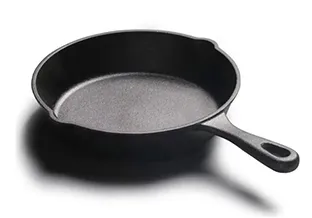
Versatile Cast Iron French Oven for Perfect Cooking and Baking Every Time
The Timeless Appeal of Cast Iron French Ovens
When it comes to versatile kitchen tools, few items can rival the classic cast iron French oven, often synonymously known as a Dutch oven. This remarkable cookware has transcended time and trends, remaining a staple in kitchens around the world. With its sturdy construction, even heat distribution, and superior heat retention, the cast iron French oven is an essential piece for both amateur cooks and seasoned chefs alike.
A Brief History
The origins of the French oven can be traced back to the early 18th century in France. Initially created for use over an open flame, these pots featured thick, heavy walls and a tight-fitting lid that helped to trap moisture and enhance flavor during cooking. The term Dutch oven is believed to have come from a method of sand-casting used in the Netherlands, which produced high-quality pots that eventually found their way to France and beyond. Over the centuries, many adaptations of the cast iron French oven emerged, including the iconic enameled versions that are celebrated today.
Why Choose Cast Iron?
One of the primary reasons to invest in a cast iron French oven is its ability to retain and evenly distribute heat. Unlike many modern pots and pans that heat unevenly, cast iron provides a steady temperature, making it ideal for slow-cooking, braising, frying, and baking. Whether you are simmering a hearty stew, baking artisan bread, or roasting vegetables, a cast iron French oven ensures that your food is cooked perfectly every time.
Another appealing aspect of cast iron is its durability. With proper care, a cast iron French oven can last a lifetime or longer. Unlike nonstick pans that can scratch or wear out, cast iron only improves with age. Seasoning the pan—a process that involves coating it with oil and heating it—creates a natural nonstick surface while also preventing rust. Many families pass down cast iron cookware from generation to generation, adding to its charm and history.
cast iron french oven

Versatility in the Kitchen
The versatility of a cast iron French oven is unmatched. It can be used on all types of heat sources, including gas, electric, induction, and even over an open fire, making it perfect for both indoor and outdoor cooking. Its heavy lid locks in moisture, making it suitable for braising tougher cuts of meat or cooking dishes that require long cooking times. Additionally, it can transition seamlessly from stovetop to oven, allowing for recipes that start with searing on the burner and finish in the oven.
Cast iron French ovens also shine when it comes to baking. They create a perfect environment for artisanal bread, yielding a crispy crust and soft interior. Many seasoned bakers swear by the effectiveness of a Dutch oven when making sourdough, as it captures steam during the first crucial moments of baking, yielding the signature rise and texture.
Caring for Your Cast Iron French Oven
Caring for your cast iron French oven is essential to ensure its longevity and performance. After each use, it's important to clean it gently with warm water and a soft brush or cloth. Avoid using harsh soaps or scrubbing pads, as these can strip away the seasoning. Once clean, dry it thoroughly and apply a light coat of oil to protect it from moisture. This simple routine preserves the frying and baking qualities of the pan for years to come.
Conclusion
In a world increasingly filled with disposable goods, the cast iron French oven stands out as a symbol of quality and durability. Its ability to create delectable meals, combined with its historical significance and enduring charm, makes it an indispensable tool in any kitchen. If you haven't yet experienced the joys of cooking with a cast iron French oven, consider adding this timeless piece to your culinary repertoire. You may find that it becomes your go-to cookware for all occasions, enriching your cooking experience with flavor, nostalgia, and an undeniable sense of tradition.
-
Season Cast Iron Perfectly with GPT-4 Turbo TipsNewsAug.01,2025
-
High Quality Cast Iron Cookware - Baixiang County Zhongda MachineryNewsAug.01,2025
-
Premium Cast Iron Pan: Durable & Perfect HeatNewsAug.01,2025
-
High Quality Kitchen Durable Black Round Cast Iron Cookware Pancake Crepe Pan-Baixiang County Zhongda Machinery Manufacturing Co., Ltd.NewsAug.01,2025
-
Cast Iron Cookware - Baixiang County Zhongda Machinery | Nonstick, Heat ResistanceNewsAug.01,2025
-
High Quality Kitchen Durable Black Round Cast Iron Cookware - Baixiang County Zhongda Machinery | Non-Stick, Heat Retention, DurableNewsJul.31,2025


